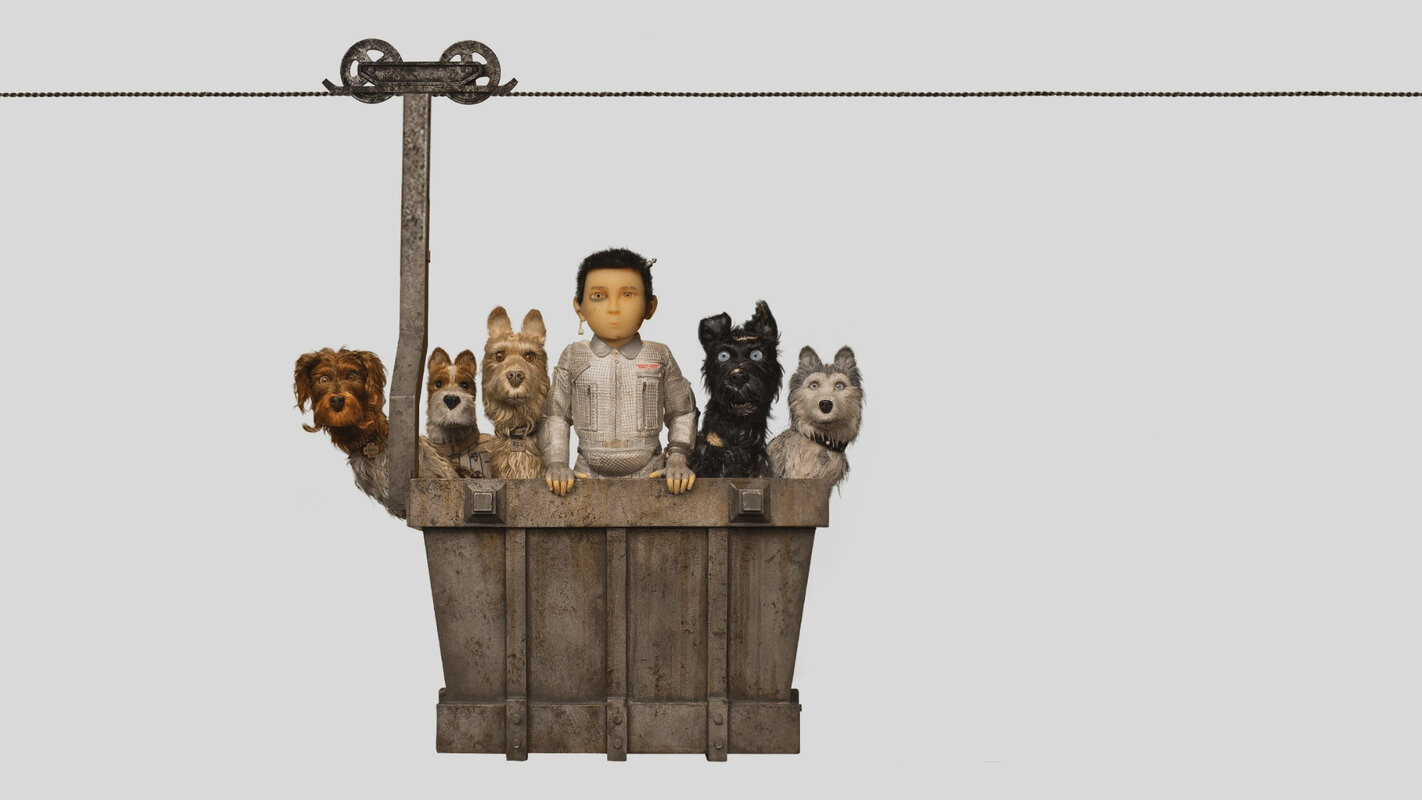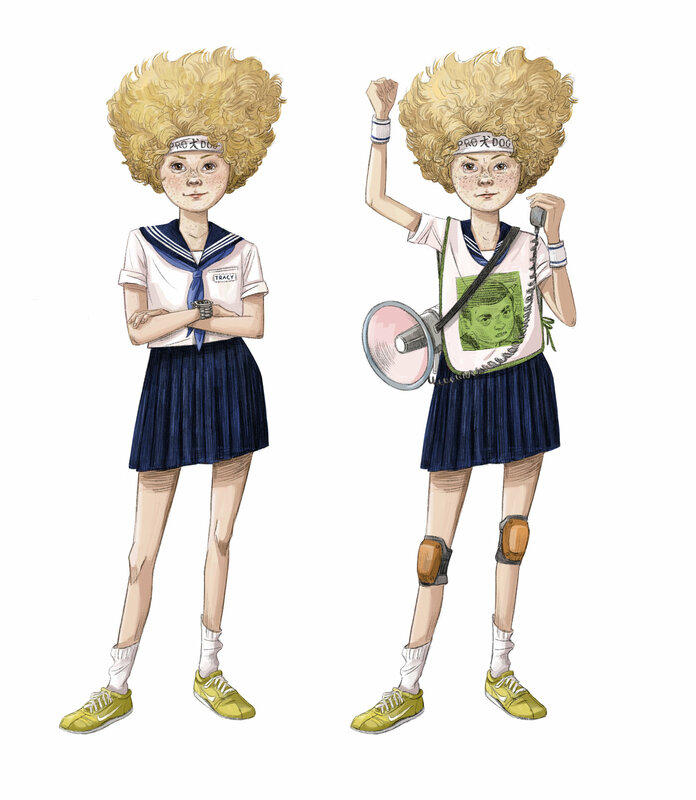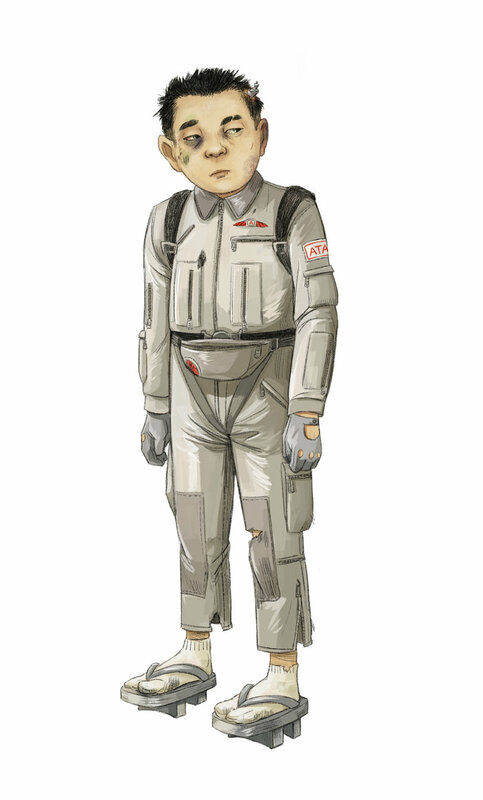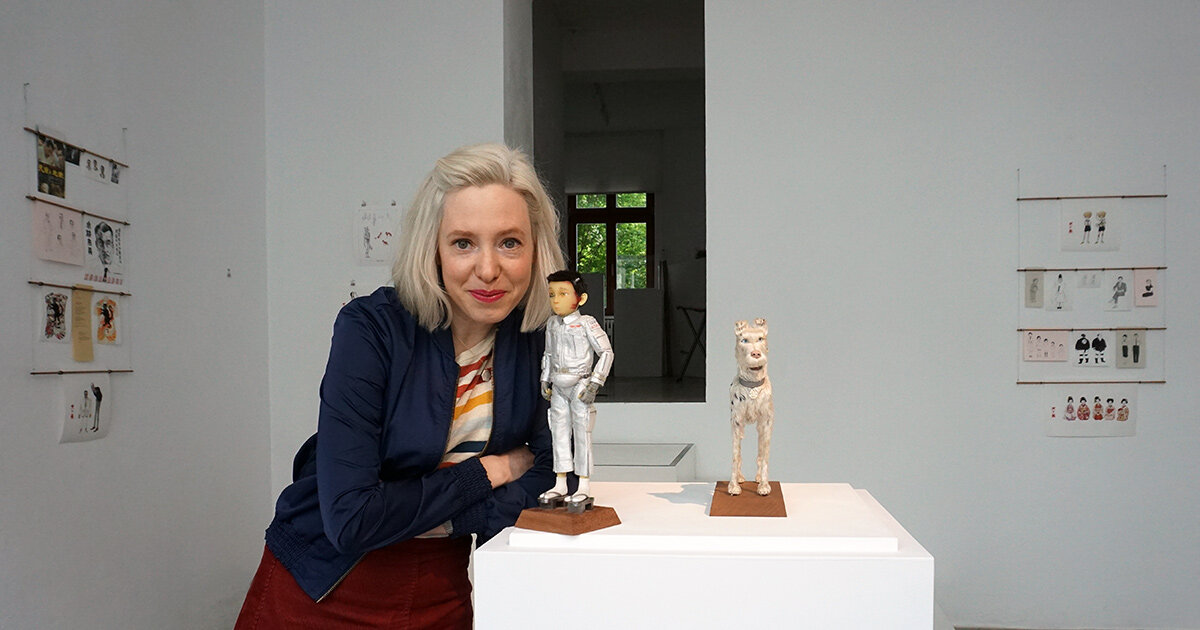
Félicie Haymoz: PAIRING HUMANS WITH THEIR SPIRIT ANIMAL
After taking her first steps on the animated feature ‘Max&Co,’ Félicie Haymoz was hired as the lead character designer for Wes Anderson’s ‘Fantastic Mr. Fox,’ tasked with turning Hollywood A-Listers into lovable furry animals. Next she moved on to design the entire cast of charming human characters for Wes Anderson’s second animation film, ‘Isle of Dogs.’ During the 15th Pictoplasma Berlin Conference we chatted with her about the joy of pairing humans with their spirit animal, the pros and cons of Wes Anderson’s communication style, and why working for others can be a real relief.
Pictoplasma: ‘Don’t stare at the lady!’ is something kids are often told by their parents. In an interview with Swiss TV you mentioned that you used to find it impossible to avoid staring at people. You would classify them and try to figure out what kind of animal they’d be.
Félicie Haymoz: It’s true! I like looking at faces and organizing them. I would actually love to do a performance where I draw people as the animals they are. But I’m afraid they’d be offended.
Why?
If they think of themselves as an eagle and I draw them as a rabbit…
That could certainly happen.
Exactly what I’m afraid of.
Did your passion for observation lead you to art?
Keen observation is definitely a prerequisite for being a character designer. I often come across people on the street or in the subway who are perfect for the project that I’m working on. In fact, it would be useful to be bold enough to sketch them instantly, but again I’m afraid of their reaction.
“When I find a good face in a movie or online, I take screenshots and keep them in a folder called These People.”
You don’t dare to pull out your sketchbook?
I am far too shy for that. I feel like I’m stealing something from them. But sometimes I take a blurry picture of them or take mental notes. When I find a good face in a movie or online, I take screenshots and keep them in a folder called ‘These People.’ It also works the other way around: when I’m involved in a project it makes me see people differently. Just recently, I was drawing trendy characters for an ad, with bright colors, and I started to see people in bold shapes, like I had a filter on that made me see people in a new light. Life and work feed each other.

If you like people-watching, New York must be the perfect city for you.
I moved to NYC from Brussels five years ago. It was not really a career decision, people don’t care where I work from, as long as I have an Internet connection. But NYC is definitely very inspiring. New Yorkers know how to show off their most bizarre kinks. All kinds of weird styles cohabit, everything is allowed!
Directly after your first job as a character designer on the animated feature ‘Max&Co’ in 2008, you were hired as the lead character designer on Wes Anderson’s ‘Fantastic Mr. Fox.’ How did that happen?
I got lucky. The great people at McKinnon and Saunders who made the puppets for ‘Max&Co’ were approached to work on ‘Fantastic Mr. Fox’ and said, ‘Hey, we know a young illustrator who draws humanized animals.’ So one morning I received an email from the production, it felt surreal! I was invited to do a first test, which was pretty stressful. I never thought I’d be qualified enough, and requests are pretty nebulous at the beginning of a production. My mission initially was to come up with a character that looked like a stuffed fox, mixed with Roald Dahl AND George Clooney.

I can picture George Clooney, but not Roald Dahl.
His features are not foxy at all! I guess that the idea was that Dahl might be a great reference for Mr. Fox’ stature or attitude. I just started drawing a realistic fox standing on his hind legs—and when he does, what happens to his arms? How would he be able to make himself a cup of tea? It was a very intense time.
But you went for it…
All I did for two weeks was to draw fox after fox, in all shapes and sizes. I was dreaming about foxes! I think that one of my drawings of Mrs. Fox finally made an impression, and I got the job.
Next you created all the human characters for Anderson’s ‘Isle of Dogs.’ Weren’t you surprised, or a little frustrated, not to be in charge of the dogs?
It’s actually very rare to have only one character designer on a stop-motion film, especially with a cast the size of the one on ‘Isle of Dogs.’ I was working six days a week for the first few months, designing the main cast of human characters. After a while, I asked about the dogs, and received a few pictures of fully sculpted dogs! What happened is that the sculptors and Wes started designing the dogs together. I saw a few pictures of the process. Andy Gent and his team of puppet makers generated a lot of dogs, and Wes would give them directions with requests like, ‘I want this one more peeled’ or ‘less teeth on this one.’ It worked really well, because the model makers are very good and because Wes is directive and knows exactly what he wants. I loved discovering the cast of dogs! I still got to design the cats so I wasn’t too frustrated…
“…it’s only at the end of the process that I realize: Ahh, this is what Wes Anderson wanted! Now it makes sense!
What’s it like working so closely with someone who knows exactly what he wants?
Usually I’d send him an initial email with several drawings for one character and he’d immediately react: ‘I like number two, but can we try these shoes?’ —sending a picture. Often things would start with a very precise reference that I’d need to stick to very closely. For example, Toshiro Mifune, a great actor from Akira Kurosawa’s movies inspired the mayor. Sometimes he’d take two drawings of mine and put them together into a sort of collage. Et voilà!

What do you need to know about a character to be able to create its shape and form?
In the case of ‘Isle of Dogs’ I got to see the animatic—the animated storyboard—quite early in the process. That was helpful for understanding what the characters were about. Of course I sometimes had problems understanding what Wes had in mind. He doesn’t really explain what he wants the character to feel like, but instead proceeds by adding little details: sunglasses on one, little scars on the face of another… And it’s only at the end of the process that I realize: Ahh, this is what he wanted! Now it makes sense!
Do you recognize your artistic input when you see the movies you worked on?
Yes and no. My drawings are only a small fraction of an entire production. A whole team is involved in making the design into a puppet that can be animated. For most characters, I only do one or two drawings. That means I didn’t draw them from all angles, no turn-arounds, so there’s room for interpretation. I like that. It adds to the project and it stresses me less when things are a bit detached from me.
Your job is done long before the movie is released. How long do you feel the pressure?
It’s a very weird feeling to see a movie I worked on for the first time. Like the first day of school maybe? I’m super stressed out, like I’m going to realize that one of my characters isn’t wearing pants! I didn’t even understand the plot of ‘Isle of Dogs’ when I saw it for the first time, it was just too overwhelming.

“I grew up watching Studio Ghibli’s films and Japanese anime, which often take place in a kind of fantasized Europe, and I really love the way they interpreted my home country, Switzerland, in ‘Heidi.’”
It’s like when you see a good friend on stage or in a movie. You’re completely focused on the familiar face and unable to grasp the acting.
Exactly!
In ‘Isle of Dogs’ Anderson tells a story which plays in Japan—and therefore represents a culture which is not his own. Was cultural appropriation an issue you discussed during the collaboration?
The production set up a huge archive of Japanese films and references, and there was a Japanese person in the production team who helped me research references, for specific things like punk shoes from the 60s, or period police uniforms for the dogcatchers. Obviously, we immersed ourselves into a cultural universe which is different from our own and, inevitably, we projected things. I grew up watching Studio Ghibli’s films and Japanese anime, which often take place in a kind of fantasized Europe, and I really love the way they interpreted my home country, Switzerland, in ‘Heidi.’ It would be a shame not to be able to fantasize about other cultures, or to be restricted to your own! Japan is one of those countries that Western filmmakers often exoticize, and it’s important to be aware of the cultural appropriation issue. I must admit that I was a bit irritated by some journalists who pointed the finger at the film before they had even watched it. And I was glad that some other articles, notably by Japanese journalists, took it more as a homage to Japanese culture and cinema.

Is cultural appropriation in general an issue in the industry?
For me that question came up for the very first time with ‘Isle of Dogs.’ The other projects I’m involved in now are about cats, so that’s pretty safe.
How does it feel for you as an illustrator and character designer to have to switch topic—and sometimes even style, for each project?
I really enjoy it! I would actually go as far as to say that I don’t have a particular style. I feel more like a designer than an artist: I like to meet the director’s demands and find the right style for each project. I get to research new references and immerse myself in a new world, and that makes it really exciting for me.
Isn’t it exhausting to constantly have to immerse yourself in new worlds?
For me it would be far more exhausting to say, ‘This is me,’ and stick to one thing. Having to develop a consistent body of work—total nightmare! I prefer to hide behind someone else’s vision. Could it be because I’m a bit of a perfectionist? I never really know for certain when something is done, or when I should stop. I like to work for animation films because there’s always someone to say, ‘Stop, it’s perfect!’ and take things out of my hands.
Interview by Elise Graton on the occasion of Pictoplasma Berlin, 2019
- 581 views
- 0x empathizes